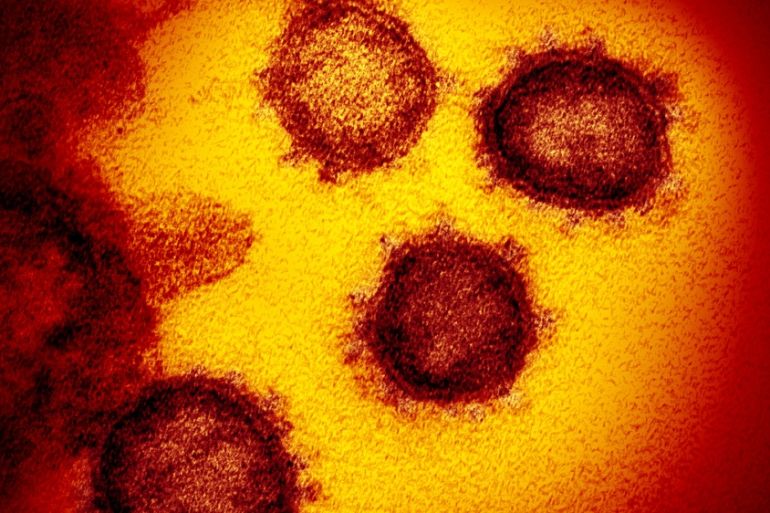Coronavirus can survive for 28 days on some surfaces: Study
Australian researchers’ findings on SARS-CoV-2 virus reinforce need for handwashing and effective cleaning.

The virus that causes COVID-19 can survive on banknotes, glass and stainless steel for up to 28 days, much longer than the flu virus, Australian researchers said on Monday, highlighting the need for effective cleaning and handwashing to help combat the disease.
Findings from the study by Australia’s national science agency, CSIRO, appear to show that in a tightly controlled environment the virus remained infectious for longer than other studies have found.
Keep reading
list of 4 itemsMexico’s teachers seek relief from pandemic-era spike in school robberies
‘A bad chapter’: Tracing the origins of Ecuador’s rise in gang violence
Why is the US economy so resilient?
CSIRO researchers said that at 20 degrees Celsius (68 degrees Fahrenheit) the SARS-COV-2 virus was “extremely robust” and remained infectious for 28 days on smooth surfaces such as plastic banknotes and glass found on mobile phone screens. The study was published in Virology Journal.
By comparison, Influenza A virus has been found to survive on surfaces for 17 days.
“It really reinforces the importance of washing hands and sanitising where possible and certainly wiping down surfaces that may be in contact with the virus,” said the study’s lead researcher Shane Riddell.
Experiments done at 20, 30 and 40 degrees Celsius (68, 86, and 104 Fahrenheit) showed the virus survived longer at cooler temperatures, smooth surfaces, and on paper banknotes rather than plastic ones.
Temperature
The researchers said that on cloth at 20 degrees they were unable to detect any viable virus beyond 14 days. At 30 degrees, the virus’ viability fell to just three days on cotton, compared with seven days for steel and smoother surfaces. Viability dropped further at 40 degrees Celsius (104 Fahrenheit).
All the experiments were done in the dark to remove the impact of ultraviolet light, as research has shown direct sunlight can kill the virus.
“So in the real world results would likely be shorter than what we were able to show,” Riddell told Reuters news agency.

Julie Leask, a professor in the Susan Wakil School of Nursing and Midwifery at the Faculty of Medicine and Health, University of Sydney, said the findings were useful but needed to be put in perspective.
“The study usefully confirms that surfaces may be a way to pass on coronavirus, but we should look to the epidemiology for how it actually moves between people in everyday life,” Leask wrote on Twitter. “That data shows it’s still close contact with an infected person that is risky and not from touching their mobile phone 5 days later.”
The infectious dose of SARS-CoV-2 is not yet known but, based on related viruses, it is thought to be about 300 particles. Researchers said if the virus was placed on smooth surfaces at the standard mucus concentration of an infected person “enough virus would easily survive for two weeks to be able to infect another person”.
CSIRO noted that infection would depend on a number of factors, including the makeup of the virus itself, the type of surface, and whether the virus is liquid or dried.
The study might also help explain the apparent persistence and spread of the virus in cool environments like meat-packing facilities, it said.